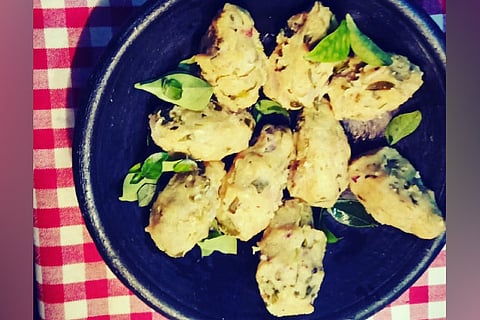

Chennai
We were on the way to Doddaballapura, once referred to as the Indian Manchester of textiles. Silk and weaving are the major industries here. I was escorting them to buy silks. I was then a part of the Taj group, and had many friends who stayed with us and had special requests.
Doddaballapura takes its name from the Kannada word dodda meaning big. The place was mentioned as Ballalapura Thanya in an ancient record dated 1598 AD at the local Adinarayana Temple. The town’s name is believed to have originated from Hoyasala named Ballala, which might have later turned to Ballapura. It is also believed that the village got its name from the story that a cow used to drop one ‘balla’ of milk over a region, and that an omen led to the birth of this town.
The region has been a place for trade activities right from the Hoyasala days. During 16th-17th centuries, Doddaballapur was reigned over by a branch of the Avathi clan. Several Hebbar Iyengars, along with spiritual Ramanuja, are said to have settled in Srirangam after being persecuted by a Chola king. In a total of seven villages around Karnataka, people were known to have established a parallel food heritage to the growing Muslim cuisine.
It was lunch hour by the time we reached Doddaballapura and we had been invited to Srinivasan Iyengar’s home for lunch. His ancestors had settled there from the time of Ramanuja. We turned into a narrow lane with old tiled houses on either side. The white-washed walls had vermillion pasted on them and the whole area was spick and span. There were many small gardens all around. We entered an old house, with a red tiled roof and wooden pillars supporting a red stone veranda in the front. Seated there on an antique chair was Srinivasan, an avid reader, writer and cook.
He welcomed us warmly and we were served neer moru (buttermilk with ginger and curry leaves) to drink. Explaining the history of the heritage dishes they were cooking for us, he led us into an old-fashioned narrow kitchen. It was a visual treat to watch a heritage Indian meal being cooked in vessels of baked clay and utensils made from wood, metal and leaves being used. Lunch was being prepared only with ingredients that are native to the sub-continent, without the English vegetables, chillies and potatoes. That did not deter a scrumptious, elaborate meal from being served. The meal included rice, mulligatawny-like saatramadu, protein-rich kuzhambu gravy, nucchina unde, and an astonishing array of vegetables and snacks. Even though the meal was elaborate, it only incorporated a very small slice of the Iyengar’s heritage food diversity.
The lady of the house had us seated in the hall outside, and served us food on banana leaf. First was the sprouted moong dal kosambari, followed by the vegetables, in the right order. We looked at the rich delicacies on our leaf and felt grateful for the bounty, knowing that these recipes were hard work of generations of cooks and housewives, who have been preserving India’s living culinary history. Vani’s and Usha’s favourite was the nucchina unde. Sharing this true heritage dish, which is both healthy and tasty.
Nucchina Unde — Steamed Lentil Dumplings
Prep time: 2 hr 30 min
Cooking time: 35 min
Serves: 10
Calories per serve: 280 cal
Ingredients
Arhar dal: 1 cup
Chana dal: ½ cup
Urad dal: 1 tbsp
Moong dal: ¼ cup
Coriander leaves: ½ cup finely chopped
Green chillies: 7 finely chopped
Peppercorns: 6
Cumin: ½ tsp
Ginger: grated or cut fine into 2-inch pieces
Freshly grated coconut: ½ cup
Mint leaves: a few chopped fine
Curry leaves: a handful
Roasted groundnuts: 1 tbsp chopped fine
Roasted cashew nuts: 1 tbsp chopped fine
Asafoetida: ½ tsp
Turmeric powder: ½ tsp
Pink salt: to taste
Method
Kitchen Tips
— Chef Ramaa Shanker is theauthor of ‘Festive Offerings to the Gods:Divine Soul Recipes’
Visit news.dtnext.in to explore our interactive epaper!
Download the DT Next app for more exciting features!
Click here for iOS
Click here for Android